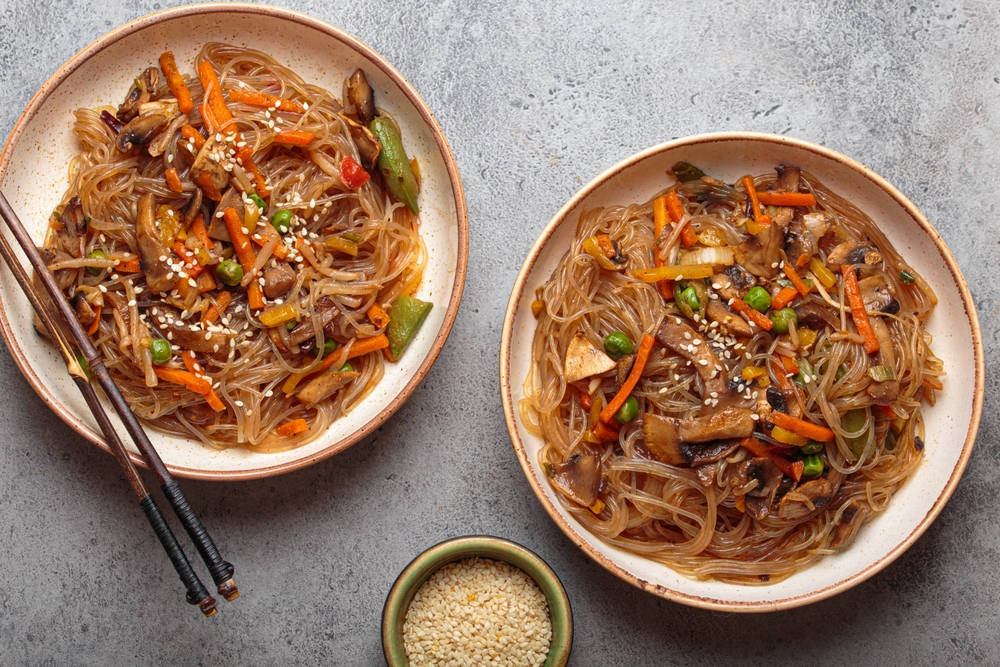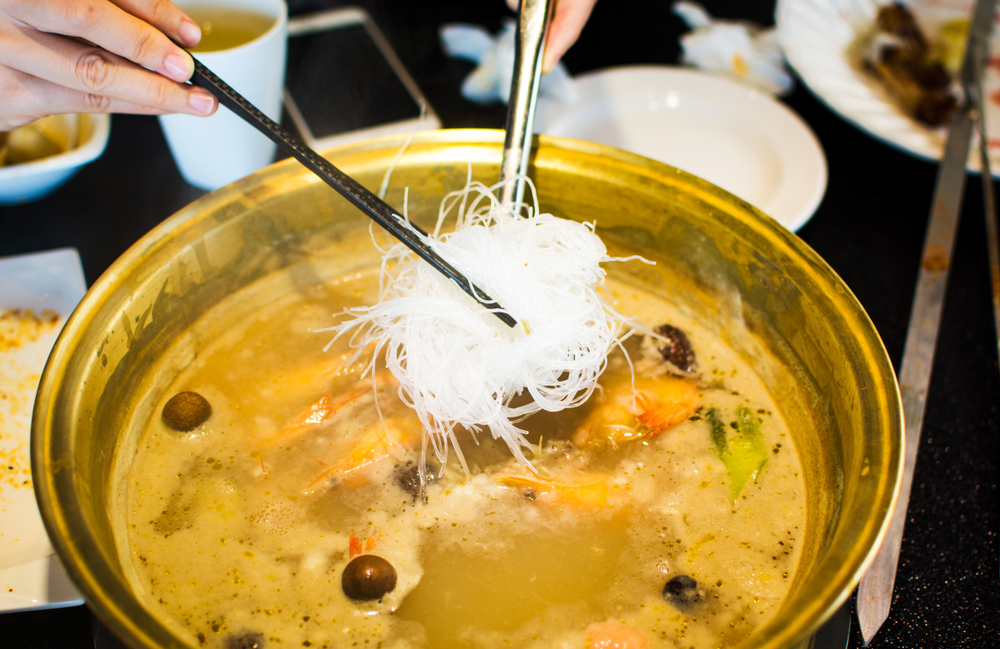Sometimes referred to as cellophane noodles or bean thread noodles, glass noodles are a staple in various dishes across multiple cultures—from hearty Asian soups to vibrant stir-fries. It’s all thanks to their unique texture and ability to soak up flavors like a sponge. What’s fascinating about these noodles is their enchanting translucent appearance once cooked, a characteristic that makes them a unique addition to your culinary repertoire.
What Are Glass Noodles Made Of?
So, what exactly are glass noodles made of? They are crafted from a few key ingredients, each offering unique traits that influence texture, taste, and ideally suited dishes. Whether you’re a food enthusiast exploring new recipes or a culinary professional crafting the next masterpiece, understanding the composition of glass noodles can be a game-changer in your kitchen.
Mung Bean
Mung bean-based glass noodles are traditional and highly prized for their light and chewy texture. When cooked, they remain clear and firm, a perfect combination for dishes that need a little extra structure. These noodles are great for stir-fries, adding an extra dimension of texture, and remain a favorite for delectable spring rolls and comforting soups.
Ideal Dishes:
- Stir-Fries: Think of a vibrant medley of veggies and proteins intertwining with these noodles.
- Spring Rolls: Imagine the satisfying crunch of fresh vegetables paired with the tender yet firm bite of mung bean noodles.
- Soups: Warm, comforting broths cradling these noodles that are perfect for soaking up rich flavors.
Potato Starch
Another variety familiar in East Asian cuisine comes from potato starch. These noodles are often praised for their soft, elastic texture, a desirable quality in many traditional dishes. Potato starch noodles are a star in Korean Japchae, balancing flavors in casseroles effortlessly with their unique mouthfeel.
Ideal Dishes:
- Korean Japchae: A harmonious blend of stir-fried glass noodles, vegetables, and sometimes meat, all tossed in a savory-sweet sauce.
- Casseroles: Generating a remarkable texture contrast while absorbing the rich flavors produced during baking.
Sweet Potato Starch
Known for its stunning glossy appearance and durability, sweet potato starch noodles have a slightly chewy texture, making them suited for dishes where robustness is a key—perfect for those hearty Korean hotpots and flavorful stir-fries.
Ideal Dishes:
- Korean Hotpots: Where noodles gleam under broths and bubbles.
- Stir-Fries: Adding a resilient component that dances with veggies and proteins in a hot pan.
Corn Starch
Corn starch-based glass noodles might not be the priciest, but they hold their own in any culinary lineup. Their softer texture and slightly less chewy nature make them a staple for swift, everyday meals.
Ideal Dishes:
- Soups: Here, they absorb the broth beautifully, becoming tender and flavorful.
- Quick Stir-Fries: For those days when you want something delicious in a jiffy, corn starch noodles hit the mark.
Mixed-Starch
Sometimes, combining different starches yields the best of all worlds. Mixed-starch glass noodles are designed for performance, offering improved texture and cooking stability. They’re very versatile.
Ideal Dishes:
- All of the above and more: Mixed-starch noodles fit in anywhere, from sophisticated dishes to comforting basics.
Clearly, each type brings something special to the table. Whether it’s the traditional charm of mung bean or the glossy resilience of sweet potato starch, there’s a world of flavors and textures to explore.
How to Choose the Types of Glass Noodles to Use
Choosing the perfect type of glass noodles for your dish can enhance its flavor, texture, and overall appeal. With various options available, it’s essential to match your choice to the specific dish you’re preparing. Let’s explore some factors to consider when making your selection.
Dish Type
First off, consider what you’re making. Glass noodles wear different hats depending on the dish:
- Stir-Fries: For stir-fried dishes, opt for mung bean or sweet potato starch noodles due to their ability to remain firm, adding a delightful chewiness that complements crunchy vegetables and savory sauces.
- Soups and Hotpots: Choose sweet potato or mung bean starch noodles to retain their structure in broth-based dishes, offering a pleasant texture while soaking up the rich flavors of the soup.
- Spring Rolls and Salads: For cold dishes like spring rolls or noodle salads, choose softer noodles like those made from mixed starches, which absorb dressings well without becoming mushy.
Texture Preference
Your personal preference for texture can influence your choice of glass noodles:
- Firm and Chewy: If you enjoy a substantial, chewy bite, go with mung bean or sweet potato starch noodles. These noodles maintain their texture well and add character to hearty dishes.
- Soft and Tender: For a softer experience that blends into your dish, consider using potato or corn starch noodles. They become tender quickly and are perfect for dishes where the noodles need to meld with the remaining ingredients.
Cooking Time and Convenience
Efficiency in the kitchen is just as important as taste:
- Quick-Cooking Options: Opt for corn or potato starch noodles when you’re pressed for time. They cook swiftly, allowing you to get dinner on the table without sacrificing flavor or quality.
- Traditional Methods: If you have more time to dedicate to your meal’s preparation, using mung bean or sweet potato starch noodles that require soaking and careful cooking can result in a dish with authentic taste and texture.
The Art of Selecting the Perfect Starch Noodle
At the end of the day, the type of glass noodle you choose depends on what you’re cooking, your texture preference, and how much time you have. Every type of glass noodle has its unique charms and uses, and exploring them can be a delightful culinary adventure.
Speaking of adventures, you might want to check out Sunright for a diverse range of glass noodles made from various ingredients to suit all your culinary needs. Whether you’re going for the firm chewiness of mung bean or the tender softness of potato starch, Sunright has got you covered.
Remember, cooking is as much about the journey as the destination. Experiment, savor, and most importantly, enjoy each moment you spend in the kitchen. And know that no matter what, you’re creating something wonderful, unique, and totally you.


